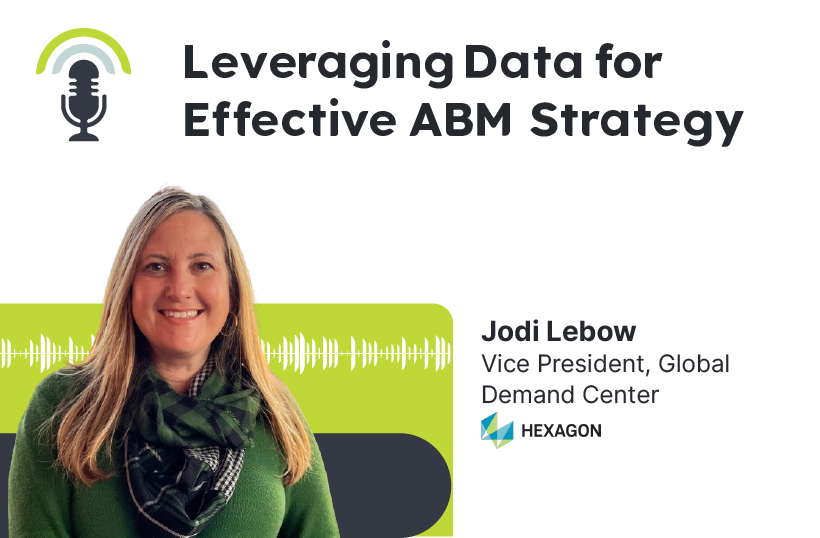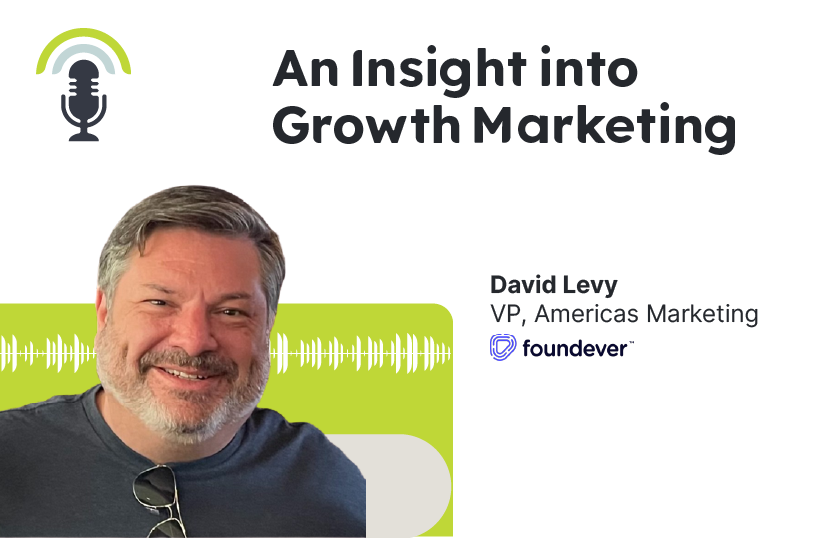Shownotes
This episode of the Sunny Side Up podcast discusses strategies for unlocking B2B marketing growth through Account Based Experiences (ABX) with Jodi Lebow of Hexagon. Jodi shares her experience in B2B technology marketing and insights into how ABM strategies have evolved with the help of data and technology. She emphasizes the importance of remaining customer-centric and leveraging customer insights. Jodi also discusses challenges in aligning sales and marketing teams for ABX and strategies for success, including tailoring content, measuring the right metrics, testing and learning, and continuous optimization. She stresses the value of data-driven decision-making and ensuring roles for everyone on the ABM team through collaboration and communication.
Best Moments
-
Jodi discusses prominent trends she's seen in the shift to more data-driven and personalized ABM strategies.
-
Jodi addresses common challenges in aligning sales teams to an account-centric approach and strategies for overcoming them.
-
Jodi emphasizes the importance of tailoring content and messaging for different customer segments and accounts.
-
Jodi provides a framework for foundational ABM practices including insights-led strategies and internal alignment.
-
Jodi discusses considerations for aligning technology selections with ABM objectives and measurement goals.
-
Jodi shares principles for effective sales and marketing alignment centered around data, collaboration, and shared goals.
About the guest
Jodi Lebow leads the Global Demand Center at Hexagon’s Asset Lifecycle Intelligence division. Her team focuses on brand & design, global campaigns, digital marketing, global events, and account-based marketing. Jodi is recognized as an experienced B2B marketing leader with vast experience in data-driven demand generation and account-based marketing (ABM) with a track record of creating strategic, integrated go-to-market strategies that generate pipeline, accelerate revenue creation, and enhance brand awareness.
Key takeaways
- ABM strategies have evolved significantly with the help of data and technology.
- Remaining customer-centric and leveraging customer insights are essential for effective ABM.
- Aligning sales and marketing teams through collaboration, communication, and data is critical.
- Tailoring content and messaging based on customer segments drives better engagement.
- Focusing on the right metrics and continuous testing/optimization leads to improved results over time.
- Leveraging technology enables personalization, measurement, and scaling of ABM programs.
Quotes
“It’s a focus on customer needs over what we have to sell. So it’s great that we have several solutions that I think this organization should or want or could need, but it’s how do you make that pivot to really trying to understand more about your customers and prospects.”
Highlights from this episode
Have you seen any prominent trends in how B2B marketing strategies have shifted and evolved?
Jodi noted a significant rise in data-driven decision-making, as marketers now have more customer data at their fingertips to personalize campaigns for specific audiences. Technology advancements have also enabled more granular personalization of content and allowed teams to be more agile in launching campaigns faster. Additionally, she saw a movement towards more account-centric strategies focused on deeply understanding buyer personas and tailoring messaging appropriately, rather than just pushing generic campaigns. Jodi believes the evolution of ABM from a buzzword to a mainstream approach has been facilitated by the enhanced capabilities now available through marketing technology to execute account-based strategies more efficiently and effectively.
What are common challenges companies face with an ABM approach and what advice do you have for overcoming hurdles?
One of the main challenges companies typically face when adopting an ABM approach is shifting the mindset of the sales organization to be more account-centric in their thinking and activities. Salespeople are often used to just receiving qualified leads from marketing and may not fully buy into a more collaborative go-to-market model.
Jodi advised that extensive education and alignment of sales and marketing is paramount to overcoming this hurdle. Ensuring both functions understand the objectives of the ABM strategy and their respective roles is critical. Regular communication across all levels, from executives down to individual reps, also helps by reinforcing consistent messaging.
Additionally, Jodi mentioned some sales teams may still view ABM as a separate initiative rather than the core go-to-market approach. Companies need to rally all teams around ABM and focus prioritization on the metrics that will move the business forward, rather than getting distracted by other vanity metrics. With patience and by continuously demonstrating the value ABM can deliver through data and success stories, organizations can overcome adoption challenges and gain full support for the new strategic model.
What strategies have you seen work well for modern marketers to employ a distinctive account-based experience?
Jodi Lebow emphasized the importance of hyper-personalization. She noted that modern marketers can deeply tailor their content and messaging by leveraging segmentation data like customer industries, solutions of interest, geographic regions, and individual account profiles. Technology also enables this level of customization through tools that allow dynamic personalization across digital touchpoints.
Jodi further explained that continuous testing and optimization are key to keeping account engagement fresh. Marketers should experiment with new creative assets, refresh content regularly, and closely monitor engagement metrics to understand what resonates best with each account. Leveraging intent and behavior data provides additional personalization opportunities, such as serving up topic-specific content informed by accounts’ areas of research and consumption.
Taking a segmented approach was also highlighted as a best practice. Dividing the target account universe into distinct profiles allows for tailored campaigns that speak directly to each group’s unique needs, rather than a one-size-fits-all message. Overall, Jodi believes distinctive account experiences are achieved through an intense focus on relevance – continuously optimizing campaigns with insights gleaned from ongoing testing and real-time account signals.
What insights and considerations do you have around aligning the marketing tech stack with ABM objectives and KPIs?
Jodi advised that organizations should first define the goals they want to achieve at each stage of their account-based journey. For example, during account selection, the goal may be to identify high-fit accounts, while content distribution requires tools to reach and engage the target audience.
Jodi also stressed not to feel pressure to over-architect the tech stack from the start. It’s better to focus first on the core functionality needed to get an initial program launched and then expand the scope over time. She recommends continuously evaluating tools based on their ability to help accomplish the goals of the current phase.
Some key considerations Jodi highlighted included selecting technologies that facilitate personalization, measurement, and scaling. She sees value in integrating platforms that support customized ads, landing pages, and experiences, as well as providing insights into what’s resonating most with accounts. Unifying data across systems in a centralized dashboard can also aid collaboration and alignment between teams.
What are some fundamental principles for aligning sales and marketing teams to improve the effectiveness of ABM as a strategy?
Some fundamental principles for aligning sales and marketing teams to improve ABM effectiveness that Jodi Lebow discussed include:
– Leveraging data to bring objective insights to sales alignment discussions and decision-making.
– Ensuring all teams understand their defined roles in ABM and view it as a core strategy, not a separate initiative.
– Facilitating regular communication across leadership and individual reps through channels like an ABM council.
– Establishing shared metrics and goals that both teams are jointly accountable for achieving.
– Focusing efforts on metrics that move the business like pipeline and revenue, not just volume metrics.
– Providing enablement and resources for reps while also gaining their ongoing feedback to iterate on ABM.

We have updated our Privacy Notice. Please click here for details.






